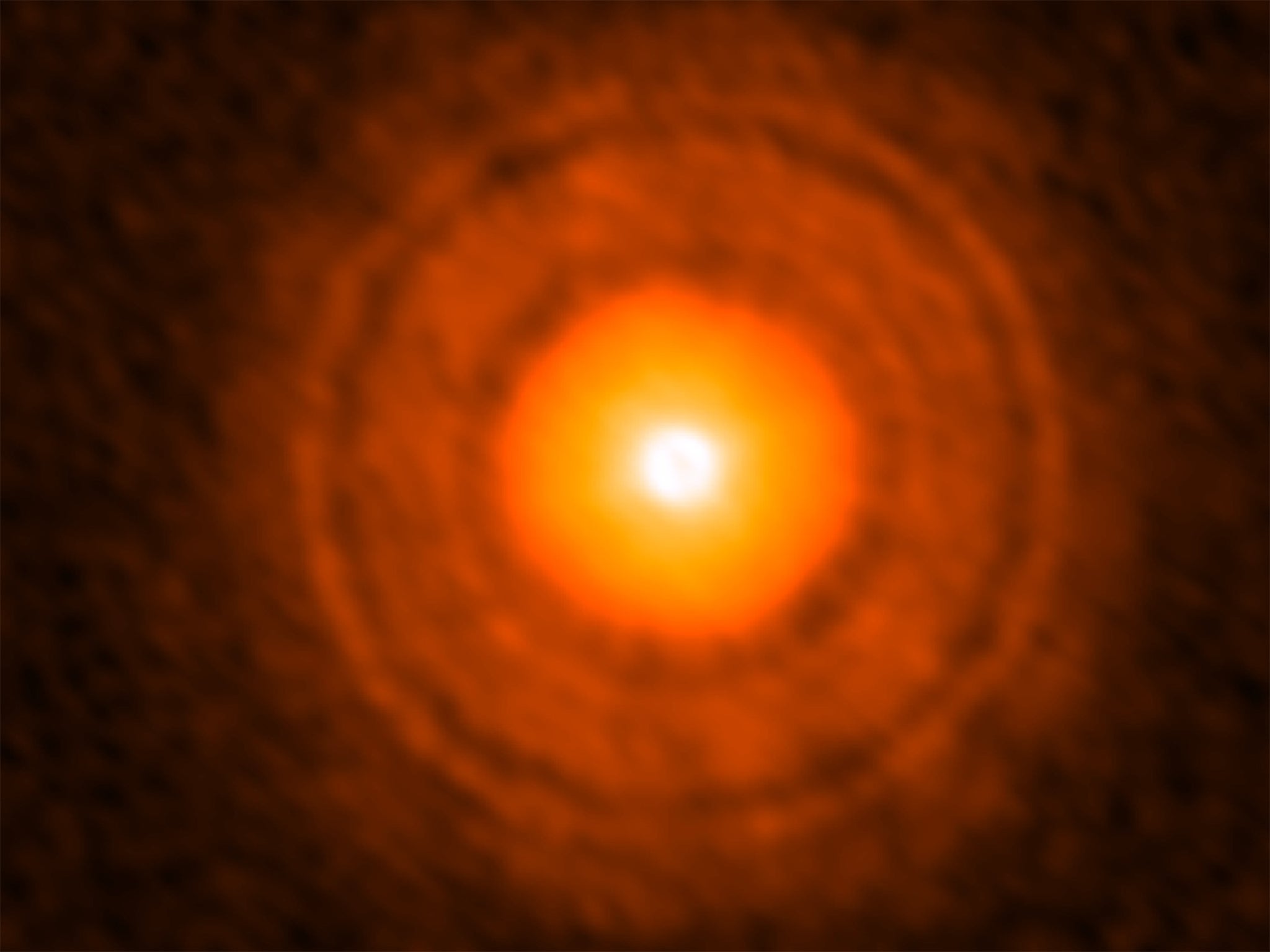Astronomers discover signs of giant planet being born in star's dust cloud
The birth took place 176 light-years away from Earth

Your support helps us to tell the story
From reproductive rights to climate change to Big Tech, The Independent is on the ground when the story is developing. Whether it's investigating the financials of Elon Musk's pro-Trump PAC or producing our latest documentary, 'The A Word', which shines a light on the American women fighting for reproductive rights, we know how important it is to parse out the facts from the messaging.
At such a critical moment in US history, we need reporters on the ground. Your donation allows us to keep sending journalists to speak to both sides of the story.
The Independent is trusted by Americans across the entire political spectrum. And unlike many other quality news outlets, we choose not to lock Americans out of our reporting and analysis with paywalls. We believe quality journalism should be available to everyone, paid for by those who can afford it.
Your support makes all the difference.Signs of a planet being born around a star have been discovered by astronomers.
The star is 176 light-years from Earth and was observed through an array of radio telescopes in Chile.
It is thought the new planet is similar to Uranus or Neptune and is an ice giant, according to the National Astronomical Observatory of Japan (NAOJ).
Researchers used the Atacama Large Millimeter/submillimeter Array (ALMA) to find the signs of the birth and believe this is a huge step towards understanding the origins of various other planets.
The findings are set to be published in Astrophysical Journal Letters.
ALMA is made up of 66 antennas on the Llano de Chajnantor, a group of astronomical observatories at an altitude of over 4.800m in the Atacama Desert of northern Chile.
Astronomers are able to see the dust that obscures parts of the sky as the antennas capture and concentrate radio waves.
The star, TW Hydrae, is one of the closest young stars to Earth and is estimated to be around 10 million-years-old.
Join our commenting forum
Join thought-provoking conversations, follow other Independent readers and see their replies
Comments